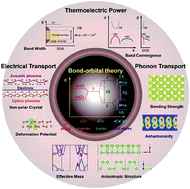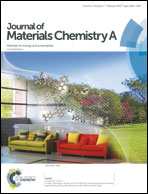Chemical intuition for high thermoelectric performance in monolayer black phosphorus, α-arsenene and aW-antimonene
Abstract
Identifying materials with intrinsically high thermoelectric performance remains a challenge even with the aid of a high-throughput search. Here, using a chemically intuitive approach based on the bond-orbital theory, three anisotropic 2D group-V materials (monolayer black phosphorus, α-arsenene, and aW-antimonene) are identified as candidates for high thermoelectric energy conversion efficiency. Concepts, such as bond length, bond angle, and bond strength, are used to explain the trends in their electronic properties, such as the band gap and the effective mass. Our first principles calculations confirm that high carrier mobilities and large Seebeck coefficients can be obtained at the same time in these materials, due to complex Fermi surfaces originating from the anisotropic structures. An intuitive understanding of how the bonding character affects phonon transport is also provided with emphasis on the importance of bonding strength and bond anharmonicity. High thermoelectric performance is observed in these materials. Our approach provides a powerful tool to identify new thermoelectric materials and evaluate their transport properties.



 Please wait while we load your content...
Please wait while we load your content...